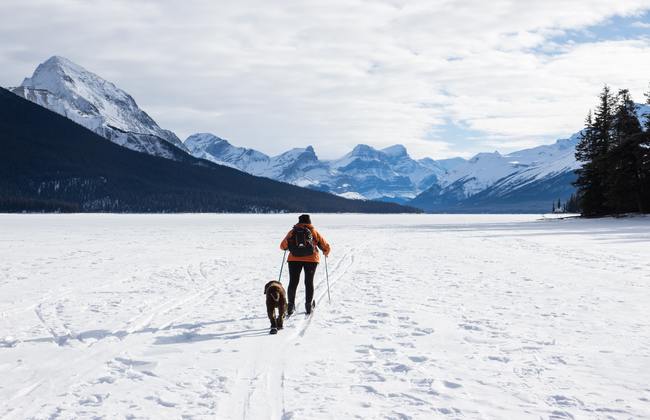How to stay safe when Cross-Country Skiing
Cross-country skiing usually has a lower risk of injury compared to other types of skiing, but it can still happen, and the activity can be tiring and physically demanding. Serious injuries are rare, but they can happen if you fall over while you are walking through the snow.
When heading out for the first time, make sure that you are following a route that is suitable for beginners by going on a blue trail. You should also carry items like a water bottle, a whistle, snacks, plasters, and a mobile phone.
If you want to feel more confident ahead of your first time out in the snow, some ski resorts offer cross-country skiing lessons to help you learn the best techniques.
What equipment do you need for cross-country skiing?
Usually skis for cross-country are thinner and lighter than those that are used for alpine skiing. This makes them better for moving through the snow on your own, as you will be without the help of downhill slopes on most routes. Similarly, boots are usually lighter, and they attach to the skis by the toe so that you can lift your heels to move forwards.
Like many winter sports, you should wear several layers when you go cross-country skiing, to protect you from the snow and cold weather. You should also wear suitable gloves that help you get a good grip of your ski poles.
It is also worth getting sunglasses to protect your eyes from the reflection of the sun, with polarised glass providing the best protection from any glares.
Winter Sports cover includes:
- Full medical assistance if required
- Lift pass cover
- Piste closure cover, to compensate for lack of snowboarding
- Avalanche delay cover
- Snowboarding and skiing both included under the plan
- Snowboard and ski equipment cover
- Pre-existing medical insurance available

